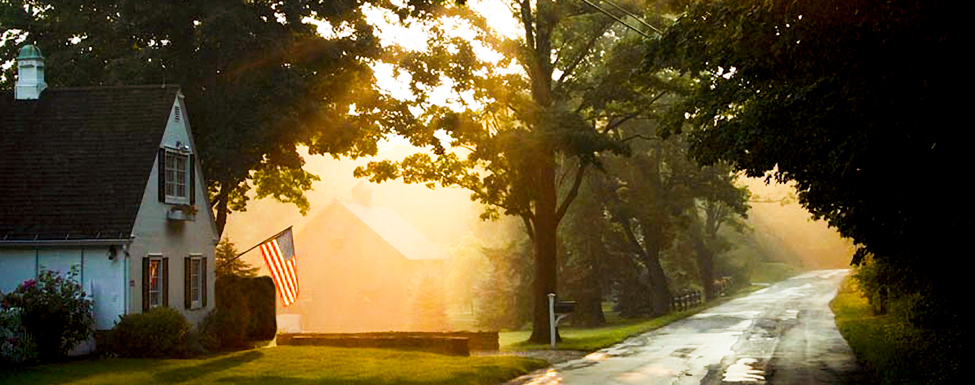Anne Day
Like Phoenix rising from the ashes, photographer Anne Day is reconstructing three decades of work that miraculously survived the 2013 conflagration that destroyed her home. At the same time, she is busy recording the history of our times, capturing new and compelling images of our nation’s tumultuous times, its architecture and the texture of our society.
Day, who was on the scene for both the Women’s March in January in Washington, D.C., and at the DNC’s National Convention in Philadelphia last July, will be the featured artist September 23rd in “Celebrating Salisbury's Own.” The biennial fundraising gala, staged by Salisbury Family Services, highlights the work of artists, writers and performers who call Salisbury home.
The exhibit, which will open with cocktails and hors d’oeuvres, will be held in Tremaine Gallery at Salisbury School and will be followed by an optional dinner at the home of Scott and Roxanne Bok. Tickets are available www.SalisburyFamilyServices.org.
“I think I will have three walls of new work and one wall of old work,” Day said.
That there is any old work to hang has to be counted as a miracle. In October 2013 a fire ripped through the home she shared with her husband, Spencer Reiss, a former Newsweek foreign correspondent and now a contributing editor at Wired. Day barely escaped the house with her life—she broke her back jumping from a second-story window—and her friend, Maria Paz Reyes, and the family dog died in the fire.
The harrowing experience also deprived her of all the personal possessions with the exception of one closet full of negatives and prints. That closet, on the lower floor, was so packed with her prints and negatives that the fire could not gain a purchase.
She said friends rallied to her assistance and discovered the cache of prints and negatives shortly after the fire. The files were quickly covered to preserve whatever the heat had spared and she was allowed to spread out the recovered photos on tables in the old Lakeville Firehouse, which was empty. There, with the help of friends, she began to assess the damage.
Nearly three years later, when she is not creating new art, Day contemplates the past and how best to recover it. “It’s excruciating going through the pictures,” she said. “My family snapshots from the time my children were born until 2009 all survived in one way or another. People were nice and sent back our Christmas cards so I have plenty of those visual memories.”
Also preserved were “some of my really important pictures,” such as Nelson Mandela, photographed on the day he emerged from his long incarceration, and the departure of Haitian President Jean-Claude “Baby Doc” Duvalier and his wife as they drove their car onto a U.S. cargo ship.
One picture found in the fire was that of Orson Welles receiving the Legion of Honour from the President of France. “All my life, I keep ending up in these amazingly good situations,” she said.
Most recently, America’s chaotic political landscape has been providing these “good situations.” In 2013, she was commissioned for the fourth time by the Presidential Inaugural Committee to photograph the inauguration. Her photographs are featured in three official inaugural books, some of which are part of a feature exhibit at the Smithsonian Institution in Washington, D.C.
In July 2016, she was on the floor as Hillary Clinton gave her acceptance speech and in November she was admitted to the VIP area during the massive Women’s March in Washington, D.C. where she snapped shots of celebrities gathered for the event. One of these, of Angela Davis, appeared in Vanity Fair.
And in 2016, she won the Arthur Ross Award given by the Institute for Classical Architecture and Art for “Exquisitely illuminating the symmetry, elegance and proportion of classical buildings” in work she has done as the principal photographer on five books in the W. W. Norton series on classical architecture. The books feature, among other buildings, the Library of Congress, the United States Capitol and the New York Public Library.
But the excitement of the present doesn’t do much to blunt the losses of the past. Many works from her long career as a photojournalist, portrait and wedding photographer and recorder of architecture were lost in an apparently random way. “There is so much that is missing,” she said ruefully. “There is still stuff in the freezer at LaBonne’s Market. We didn’t have time to wash and dry the negatives, so freezing keeps them from deteriorating further.”
As she goes through the material, she tries to think what to include in the upcoming show. New prints will have to be made and framed and professional scans, at $60 per scan, will be needed. “The woman I take them to lives in Chatham (NY) and is the best scanner in the United States. The difference is extraordinary. Eventually, I would like to scan everything that is important and I am trying to figure out a way.”
Meanwhile, she says she has plenty of new work. “I would prefer to move forward,” she said, “but I don’t feel right about letting this older stuff molder.”

